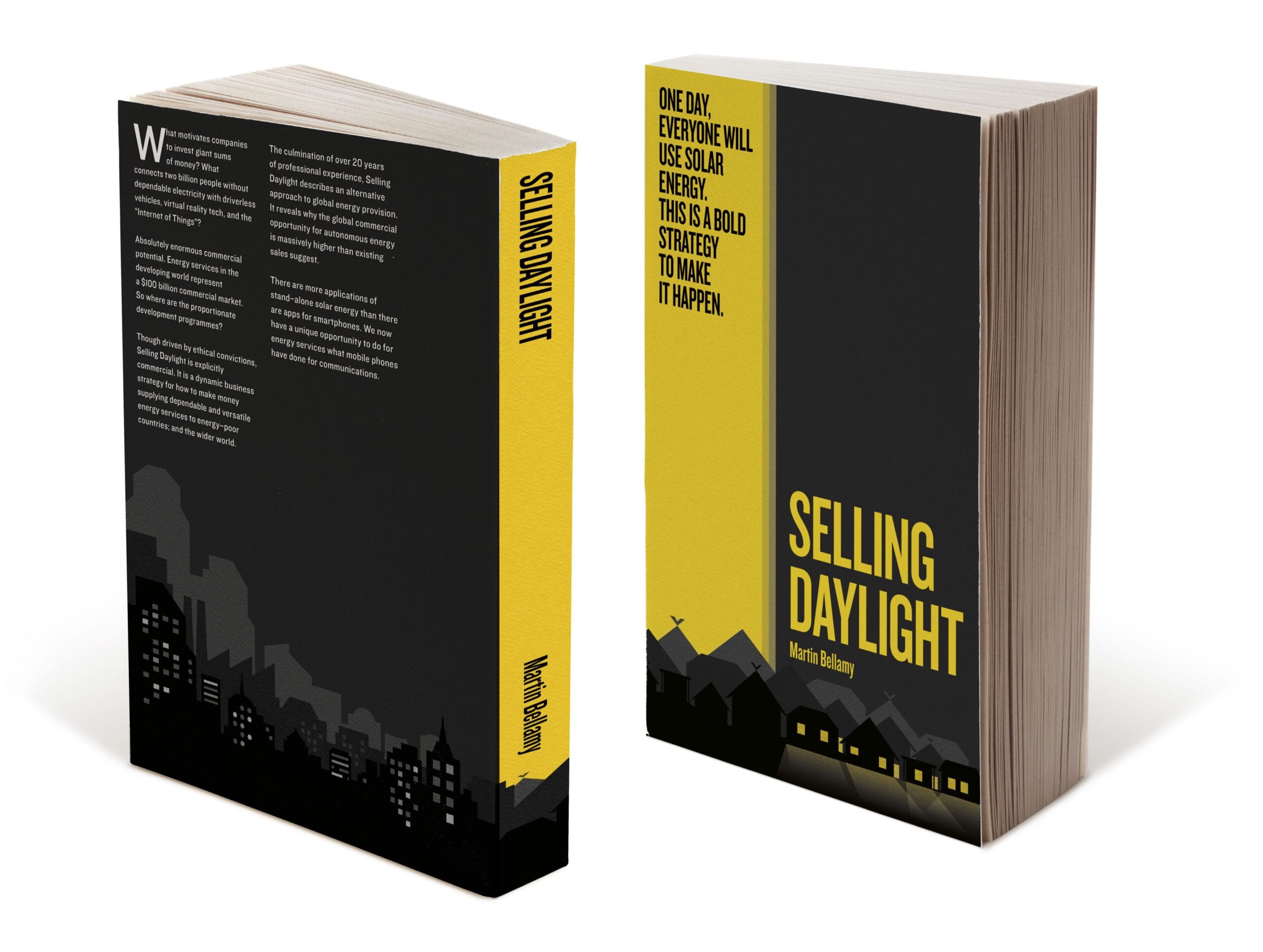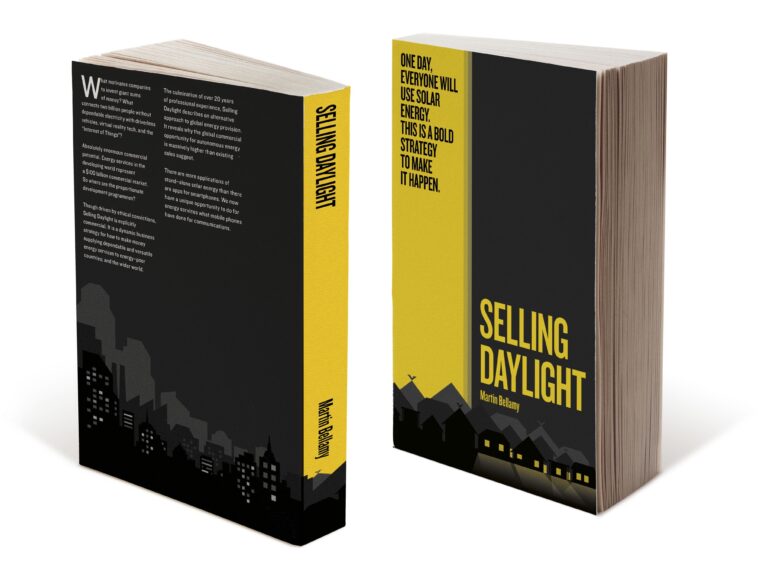About The Book Content
Part One – How we use energy and why change is paramount
- Electricity and people
- Fuel and our lack of awareness
- The developing world cannot have reliable grid electricity
- Accepting that the grid format cannot end energy poverty
Part Two – Introducing the Selling Daylight proposition
- Personalising energy
- An introduction to PV systems
- Universally accessible visual media
- The core value and poor reputation of ‘off-grid’ PV


Part Three – Major elements of the Selling Daylight strategy
- Focusing on quality and value
- Optimising stand-alone PV hardware design
- Sharing essential knowledge with everyone
- The need to reform procurement of stand-alone PV projects
-
Why creating an energy services brand is essential
Part Four – People are the cause of poverty; and the solution
- Why poverty persists
- Finance, technology and people
- Scale, diversity and people
- Motivating millions of people and giant companies
Part Five – Implementing the Selling Daylight strategy
- The need for a long-term strategy
- Why and how to be a diverse company
- Mapping global markets
- Where to start
Part Six – The commercial value and need for local partners
- Selling guaranteed energy services
- Commercial growth from
- listening to the local market
- The essential role of local partner networks
- Global organisations partnering local networks
Part Seven – Why this strategy can work
- A critical look at the Selling
- Daylight proposition
- A focus on value justifies the price.
- A civil dawn: life with inclusive autonomous energy services

Synopsis
Two billion people are in dire energy poverty. Modern electrical energy services are essential for social and economic progress in the developing world, and underpin a digital and interconnected society.
Selling Daylight, though driven by ethical concerns, is explicitly commercial. It is a business strategy for supplying dependable, versatile energy services to the world at large. It proposes that photovoltaics (PV) – the direct generation of electricity from light – is the only solution which meets the scale and diversity of these needs. Stand-alone, or “off-grid” PV systems are clean, silent, reliable and low-maintenance; and they represent the highest value option in a truly gigantic emerging market.
Selling Daylight critiques the prevailing economic models of cost-competition, proposing instead that robust, versatile solutions are essential for customers to recognise and define the value they draw from them – thereby personalising their energy.
Selling Daylight asserts that there is no shortage of money and no technological barriers to progress. The problem is a lack of motivation to act, itself a function of how little we in privileged, grid-powered societies actually know or care about energy and fuel.
The culmination of over 18 years of professional experience, Selling Daylight reveals why the global commercial opportunity for autonomous energy is massively higher than existing sales suggest. These solutions can be implemented with profit now, utilising proven technology, through existing supply channels and within existing expenditure.


The business strategy is a formidable undertaking, requiring capital expenditure, commitment, willingness to marry global corporations with existing local networks, and a bomb-proof methodology for communicating value across national, linguistic and cultural barriers. The ultimate prize? Dependable and versatile energy services; a foundation for healthcare, education, agriculture, communications, entertainment, businesses, domestic and personal needs for (the) personalised energy generation.
